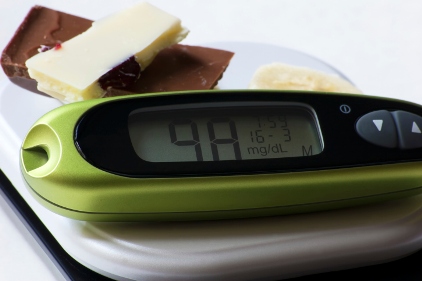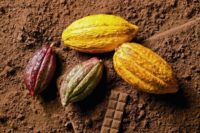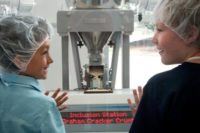
|
Finally, the words “chocolate” and “diabetes” are in the same story, and the article has a positive angle.
A new study in the Journal of Nutrition reveals that eating specific flavonoids found in chocolate, berries and tea can offer protection from type 2 Diabetes.
Specifically, eating a high level of the flavonoid anthocyanins and other compounds can lower insulin resistance and lead to better blood glucose regulation.
The research was conducted by the University of East Anglia and King’s College London in the UK.
“This is an exciting finding that shows that some components of foods that we consider unhealthy, like chocolate or wine, may contain some beneficial substances,” says Tim Spector, research collaborator and director of the TwinsUK study from King’s College London.
The study of almost 2,000 people also found that these food groups lower inflammation which, when chronic, is associated with diabetes, obesity, cardiovascular disease, and cancer.
Professor Aedin Cassidy from UEA’s Norwich Medical School led the research.
She says the research focused on sub-groups of flavanoids. Specifically, the studies looked at flavones (found in herbs and vegetables such as parsley, thyme, and celery) and anthocyanins (found in berries, red grapes, wine and other red or blue-colored fruits and vegetables).
“This is one of the first large-scale human studies to look at how these powerful bioactive compounds might reduce the risk of diabetes,” she says. “Until now little has been know about how habitual intakes might affect insulin resistance, blood glucose regulation and inflammation in humans.”
Researchers studied almost 2,000 healthy women volunteers from TwinsUK who had completed a food questionnaire designed to estimate total dietary flavonoid intake as well as intakes from six flavonoid subclasses.
Blood samples were analyzed for evidence of both glucose regulation and inflammation. Insulin resistance, a hallmark of type 2 diabetes, was assessed using an equation that considered both fasting insulin and glucose levels.
“What we don’t yet know is exactly how much of these compounds are necessary to potentially reduce the risk of type 2 diabetes,” Cassidy says.
Researchers say further studies will be needed to determine how the compounds directly lower the risk of diabetes.
“If we can start to identify and separate these substances we can potentially improve healthy eating,” Spector says. “There are many reasons, including genetics, why people prefer certain foods, so we should be cautious until we test them properly in randomized trials and in people developing early diabetes.”
That being said, all this research sure does make a pretty strong case for grabbing a chocolate bar for a mid-afternoon snack.





